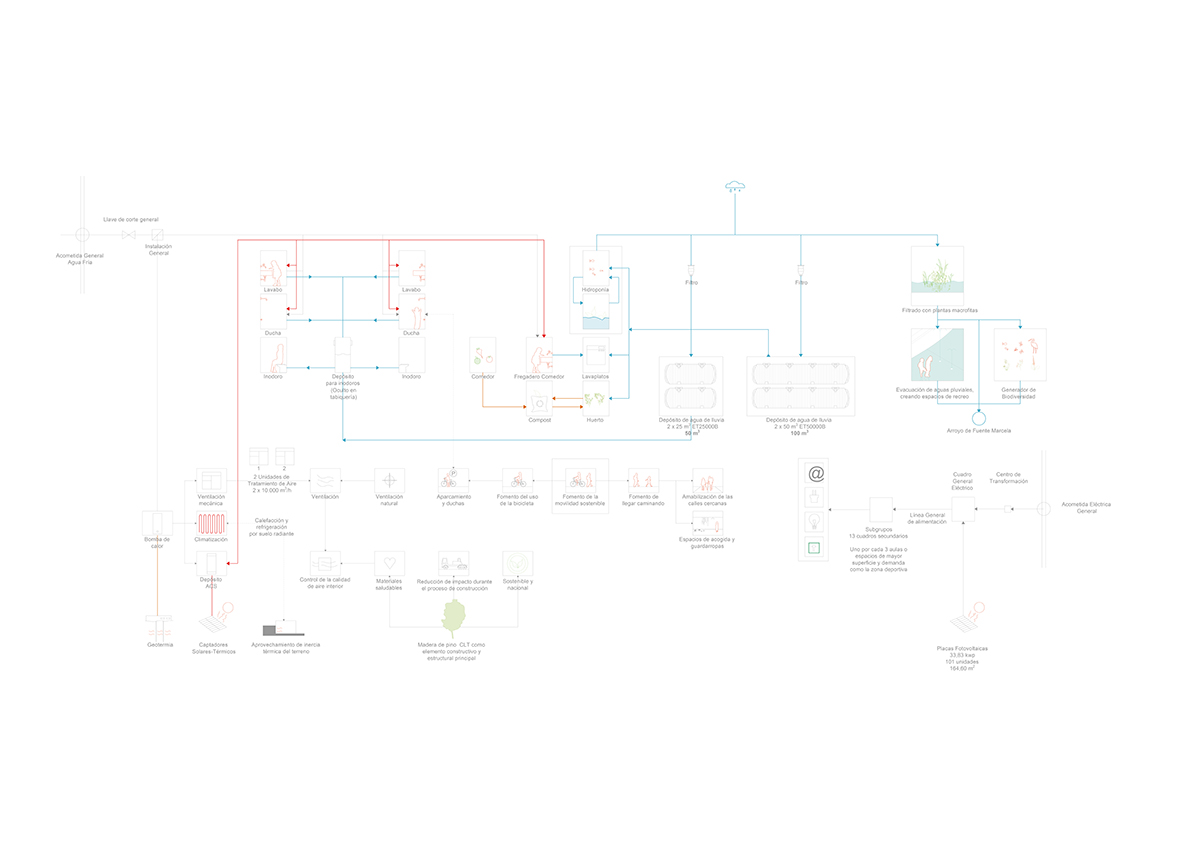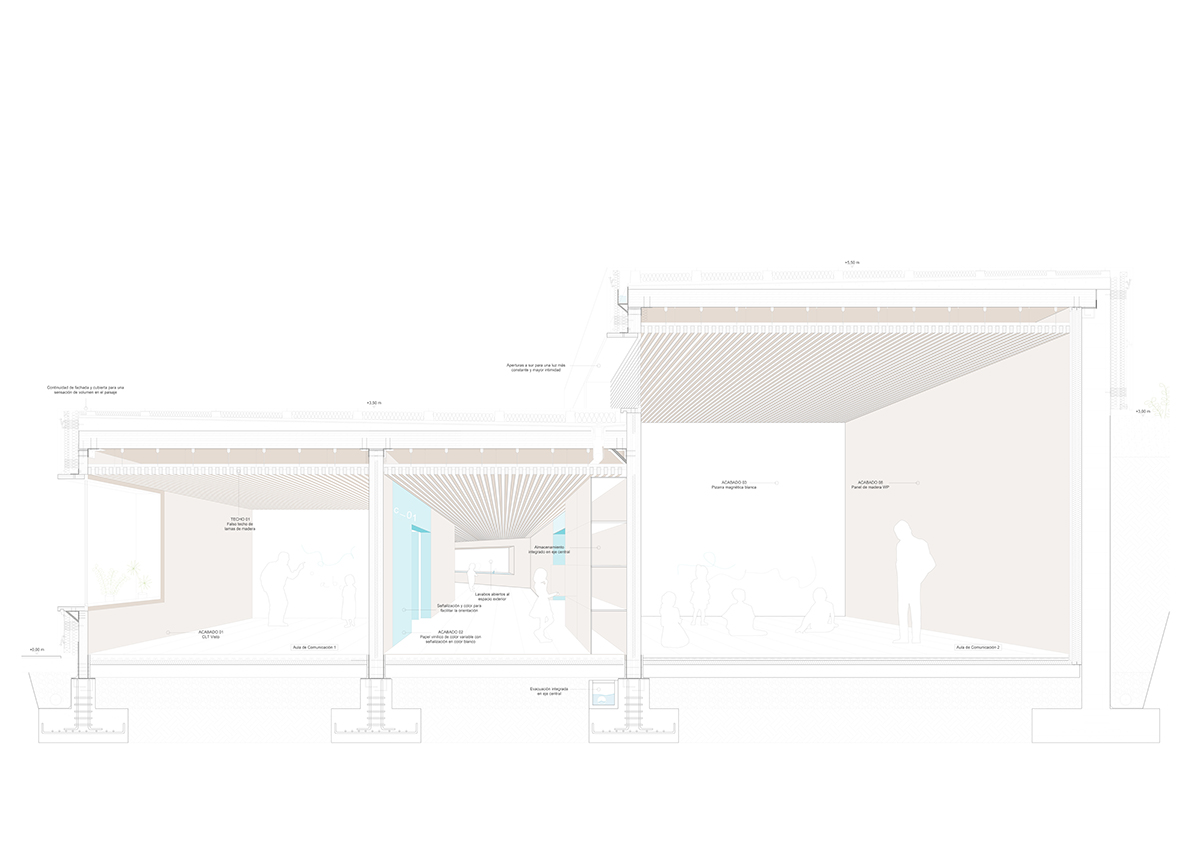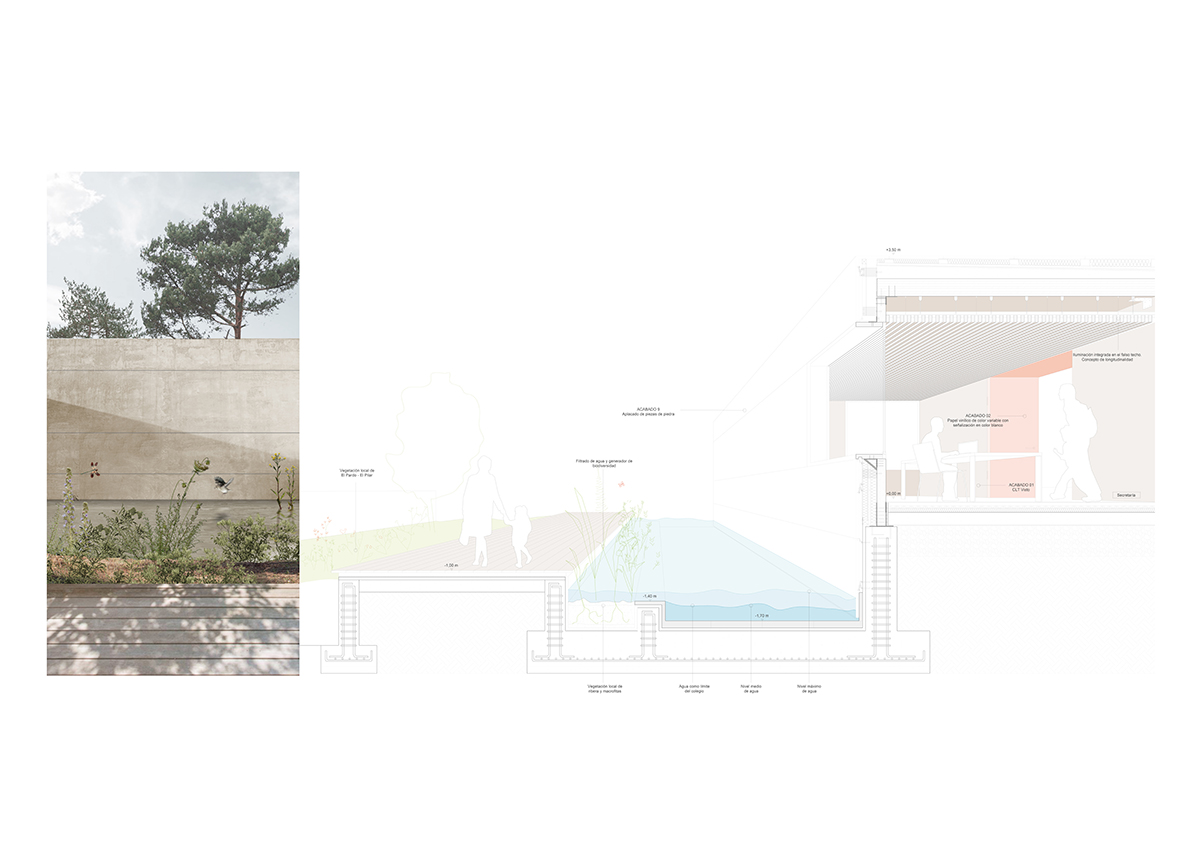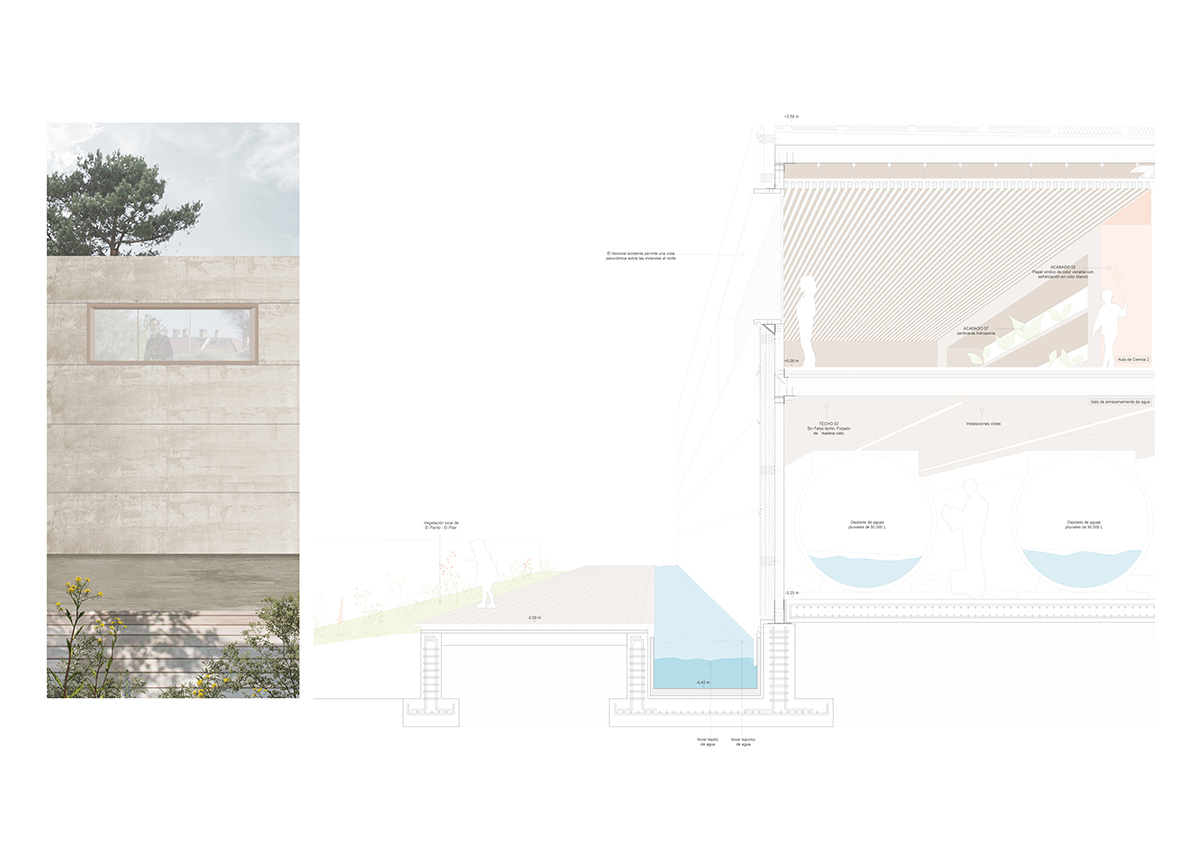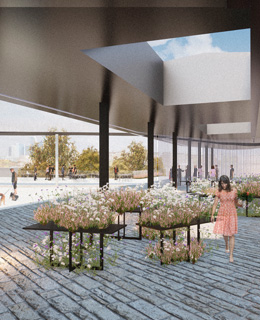
Xabier Erice
The rivers are coming back to Majadahonda! Landscape intervention and centre educational at area Metropolitana de Madrid
project Final Degree Master's Degree in Architecture
University of Navarra
Tutor: Mayka García-Hípola
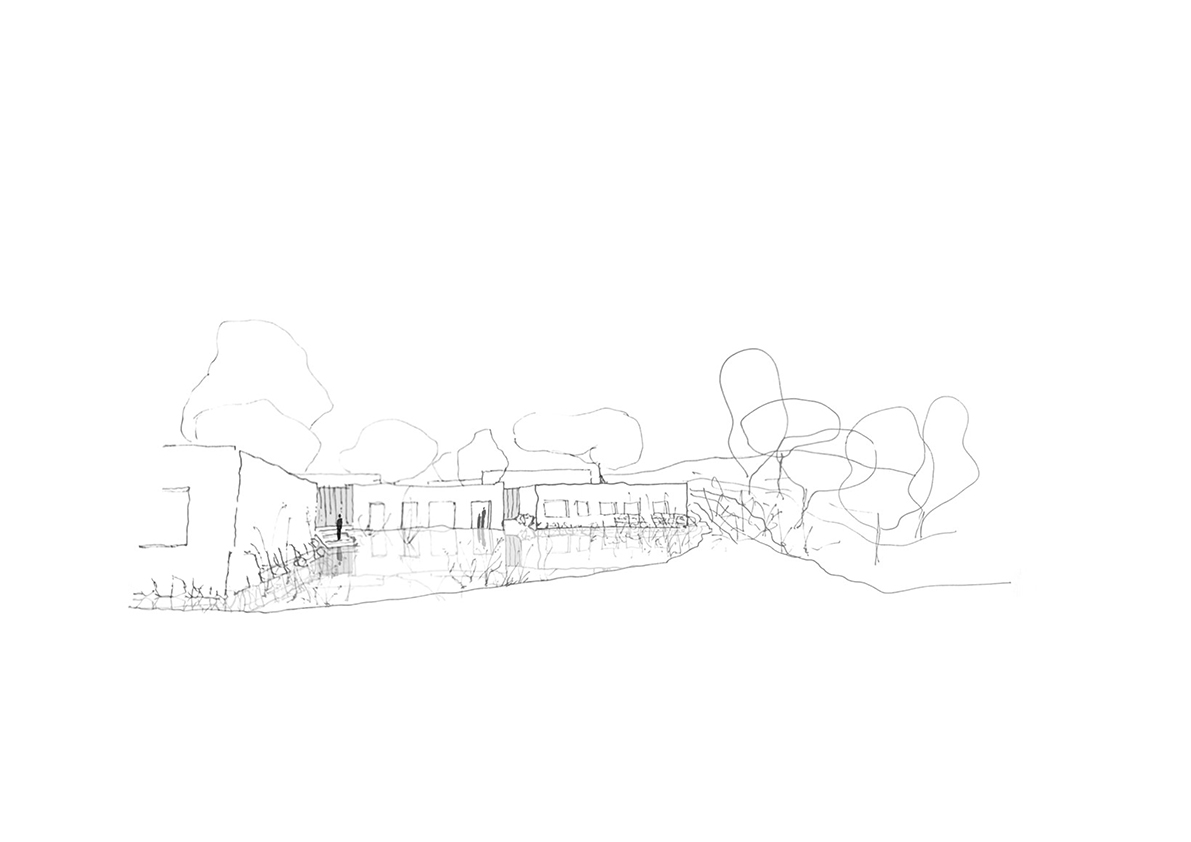
Climate change is a global phenomenon that affects every part of the world in a different way. In Spain, rising temperatures and periods without rain are becoming more and more frequent and the trend will continue in the coming decades. The climate crisis and especially the water crisis that the centre of the peninsula is going to suffer in a special way means that we have to make our cities and territories more resilient.
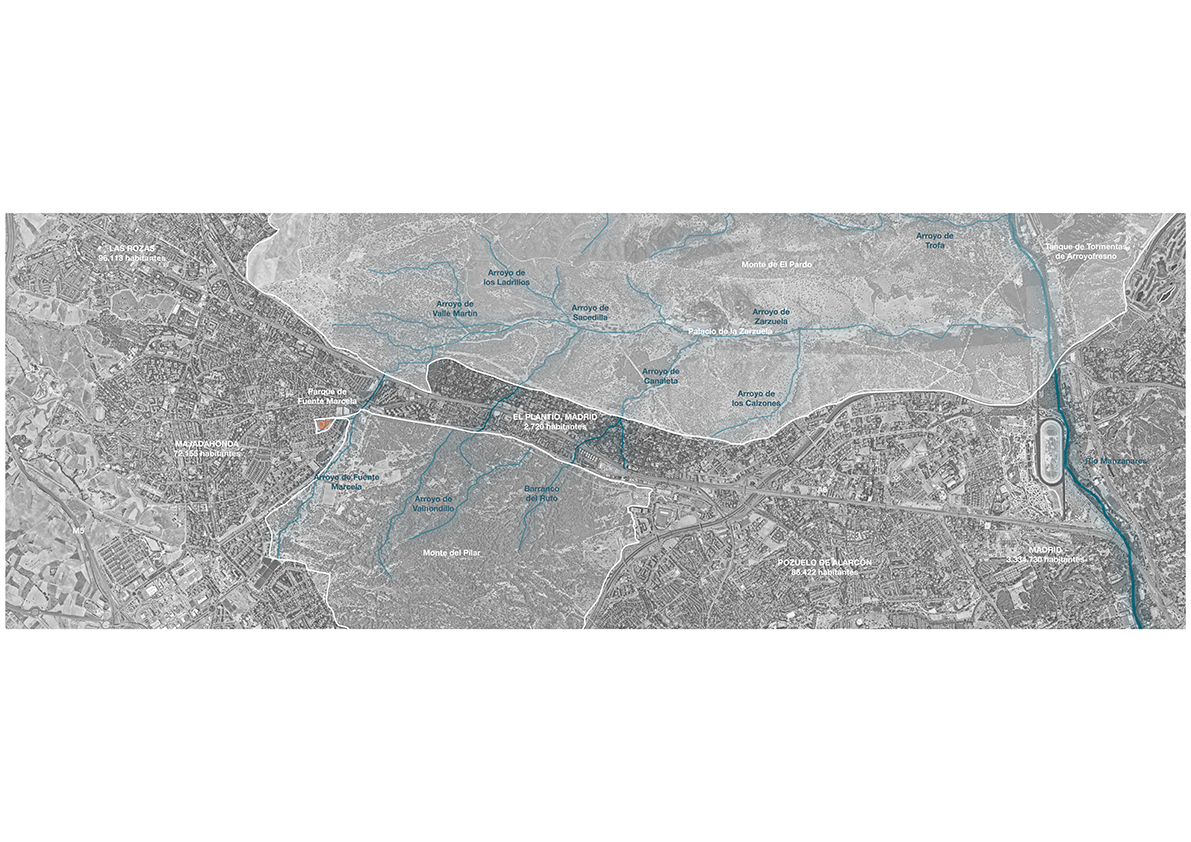
In this context, the project landscape intervention and educational centre in Majadahonda seeks to recover a natural environment such as the stream located in the park of source Marcela, giving it back its natural utility of water evacuation within the hydrographic system of Monte del Pilar - El Pardo - Manzanares. Each intervention in the landscape, as well as the children's and primary high school , has a specific didactic goal for children, the city and awareness of environmental care.
These interventions in the landscape seek to promote the biodiversity of the place, returning water to a space that has been altered by the urban development of recent decades. In this way, recreational spaces are created that accompany the water from its collection until it flows into the nearest stream. The importance of the intervention lies in the duality of the space, that is to say, spaces are created whose use changes according to the water level but which always have something to contribute to the social interaction of this municipality in the metropolitan area of Madrid's area .
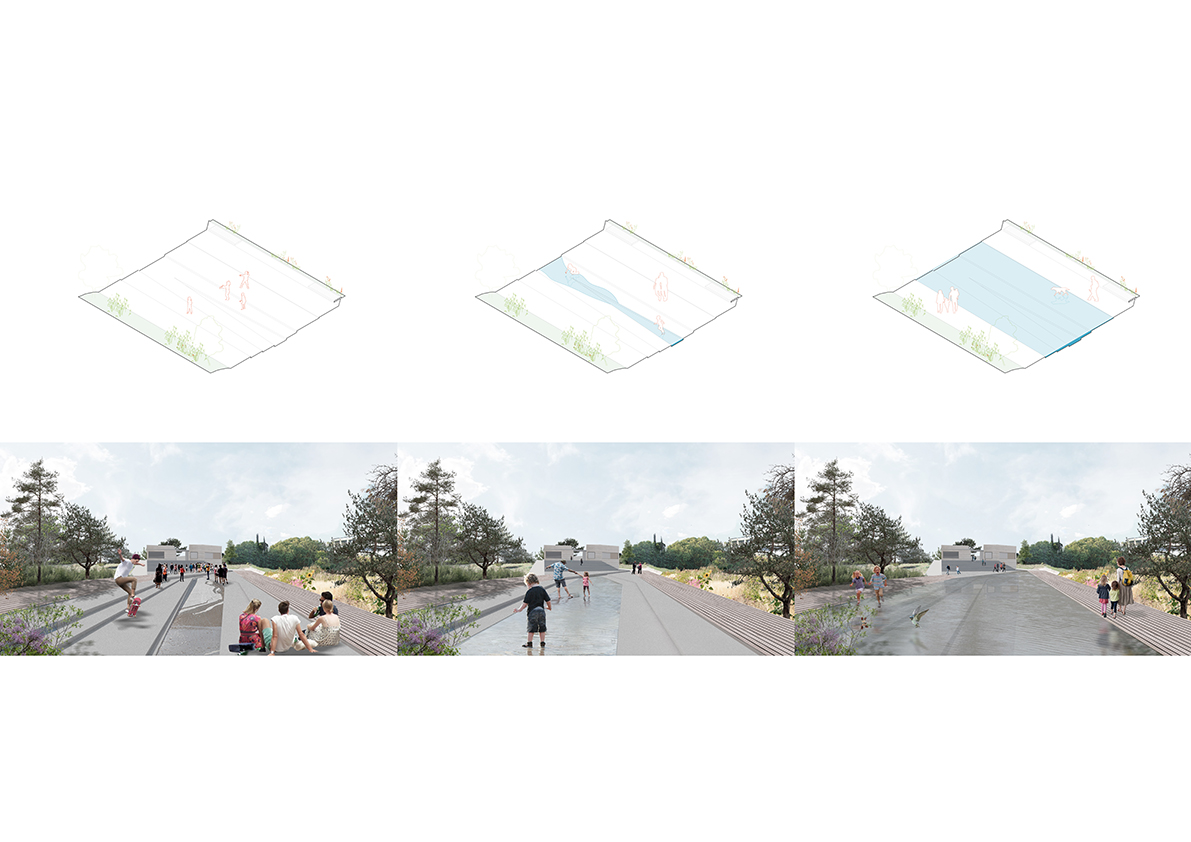
The building educational is based on this idea of landscape. It emerges as a series of pavilions hidden in the forest and following the natural direction of the water. This relationship with the outside space, the vegetation, the water and also the relationship between the different teaching spaces inside are the starting points of high school. The programme is organised in such a way that all the different disciplines of the child are encouraged, giving all the children's abilities equal importance. Thus, each space relates to the environment in a different way according to its interior use, the dimensions and light of each place are designed for the activity to be carried out there and active learning is encouraged, making the pupils have to move around and discover the building and the natural space surrounding it.
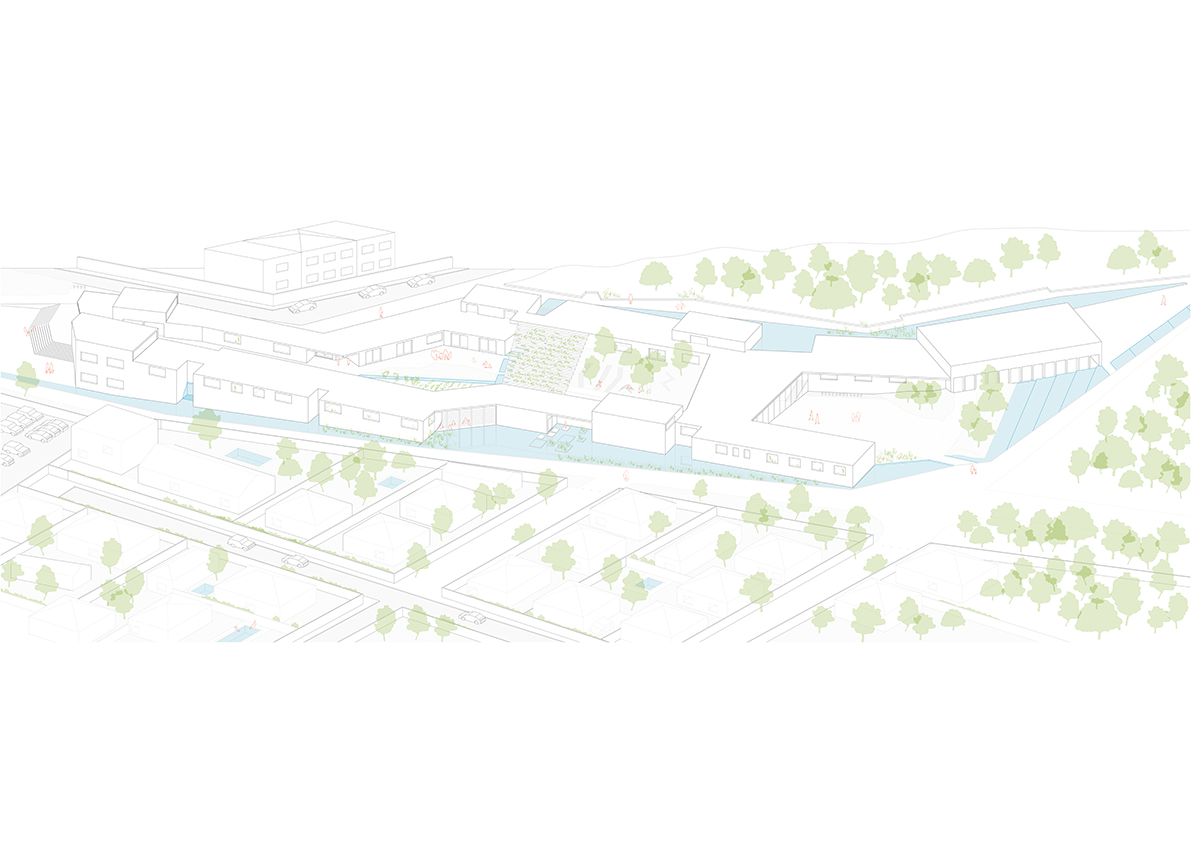
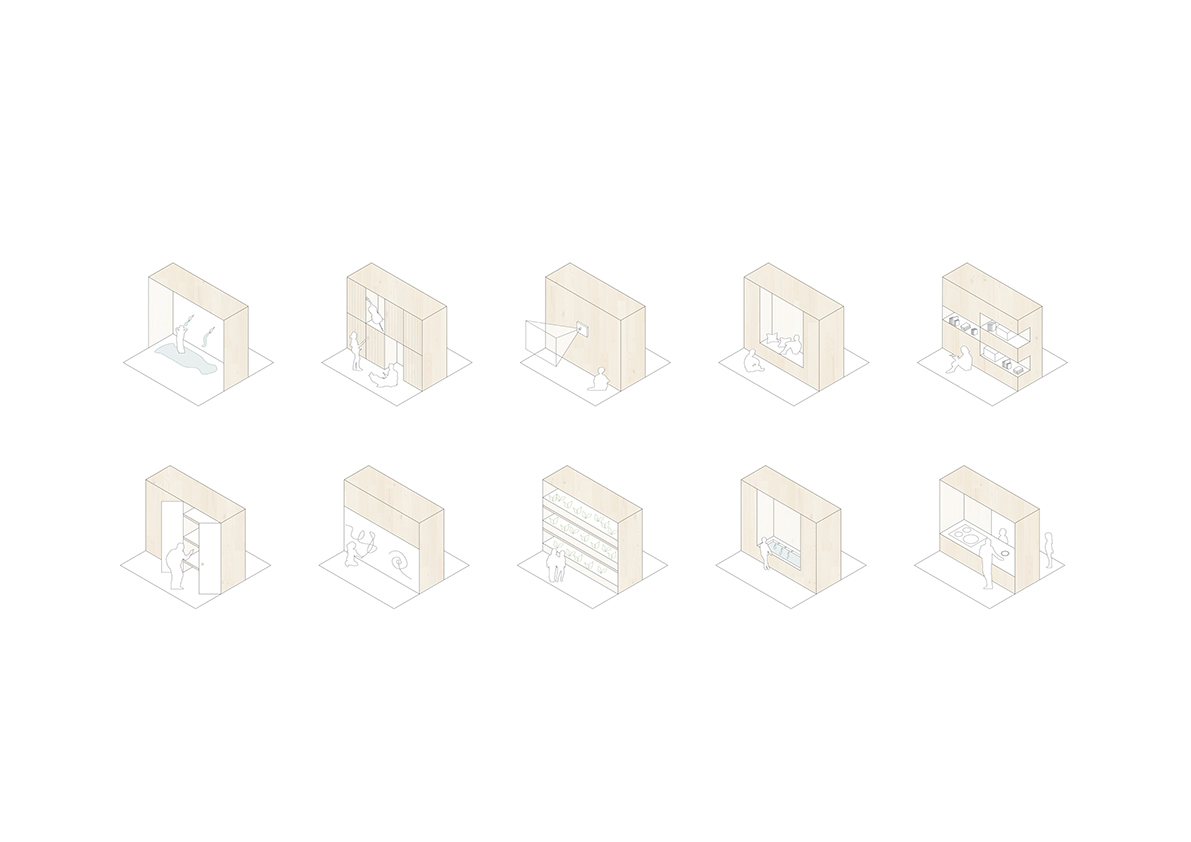
The high school itself is intended to be a way of bringing children closer to the natural environment and to educate them in day-to-day environmental care. This idea is also followed in the constructive and structural design of the building, as well as in the environmental measures and in the installations. In order to create a more comfortable and tactile environment for users, cross-laminated timber is used as the main structural and finishing material, contrasting with the exterior stone finish that financial aid blends the building into the pine forest.
Therefore, this project seeks to be an example of how to face challenge climate change as an opportunity to improve our cities. In addition to showing a way of educating future generations through a building that accompanies a freer form of teaching and seeks to develop each of the capabilities of its students.
